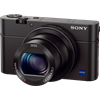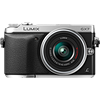Main
Model
Price
Advantages
launch
Announced
Body type
Camera subcategory
Sensor
Effective pixels
Max resolution
Sensor size
Sensor type
Processor
Image ratio w:h
Other resolutions
Sensor photo detectors
Image
ISO
Boosted ISO (minimum)
Boosted ISO (maximum)
White balance presets
Custom white balance
Image stabilization
Uncompressed format
JPEG quality levels
Photography features
Minimum shutter speed
Maximum shutter speed
Aperture priority
Shutter priority
Manual exposure mode
Subject / scene modes
Built-in flash
External flash
Continuous drive
Self-timer
Metering modes
Exposure compensation
AE Bracketing
WB Bracketing
Flash range
Flash modes
Screen / viewfinder
Articulated LCD
Screen size
Screen dots
Touch screen
Screen type
Live view
Viewfinder type
Viewfinder coverage
Viewfinder magnification
Viewfinder resolution
Videography features
Resolutions
File Format
Videography notes
Microphone
Speaker
Optics & Focus
Focal length (equiv.)
Optical zoom
Maximum aperture
Autofocus
Digital zoom
Manual focus
Normal focus range
Macro focus range
Number of focus points
Lens mount
Focal length multiplier
Physical
Weight (inc. batteries)
Dimensions
Environmentally sealed
Battery
Battery details
Battery Life (CIPA)
Storage
Storage types
Connectivity
USB
HDMI
Microphone port
Headphone port
Wireless
Wireless notes
Remote control
Other features
Orientation sensor
Timelapse recording
GPS
Samples
Videos
Summary
The Cyber-shot DSC-RX100 III highest resolution of 5472 x 3648 pixels (20 megapixels) is better in comparison with the Lumix DMC-GX7 highest resolution of 4592 x 3448 pixels (16 megapixels). The Lumix DMC-GX7 is equipped with larger sensor than the Cyber-shot DSC-RX100 III: Four Thirds (17.3 x 13 mm) versus 1 (13.2 x 8.8 mm). This is the most important difference between these cameras as big sensor lets the camera owner to make pictures of the higher quality. The Lumix DMC-GX7 has a wider ISO range of 125-25600 in compare with 125-12800 ISO range of the Cyber-shot DSC-RX100 III. Such ISO range let the camera owner to make better pictures in dim light situations. The Cyber-shot DSC-RX100 III provides more number of white balance presets - 9. This option gives the camera owner more control over colour. The Cyber-shot DSC-RX100 III provides image stabilization that will help the camera owner to make sharp pictures when using telephoto lenses. The Cyber-shot DSC-RX100 III provides more powerful 5.8x digital zoom. The Cyber-shot DSC-RX100 III has more focus points in compare with the Lumix DMC-GX7: 25 vs 23. More focus points means more convenience when attempting to focus on objects which are not centred.
The Cyber-shot DSC-RX100 III screen is better as it offers more screen dots 1,228,800 in compare to 1,040,000 dots of the Lumix DMC-GX7 screen. The higher dot count screen is better for reviewing photos on your camera. The Lumix DMC-GX7 has a touch screen. The Lumix DMC-GX7 has better lowest (60 seconds) and highest (1/8000 second) shutter speeds.
The Lumix DMC-GX7 supports external flash. An external flash provides amazing control over the exposure and lighting of the object in dim light or in bright light situations where the camera owner needs to fill-flash. The Lumix DMC-GX7 battery life is better in compare to the Cyber-shot DSC-RX100 III battery life. In accordance with CIPA standards the camera owner will be able to produce 350 shots with the Lumix DMC-GX7 and only 320 with the Cyber-shot DSC-RX100 III. The Cyber-shot DSC-RX100 III weighs 290g that is 112g lighter in comparison with the weight of the Lumix DMC-GX7.
The Cyber-shot DSC-RX100 III has 10 advantages and the Lumix DMC-GX7 only 8 so the Cyber-shot DSC-RX100 III will be the best buy. Check the lowest price on Amazon.


